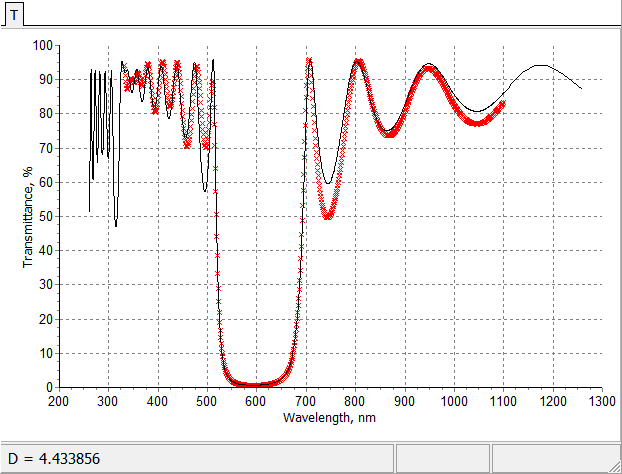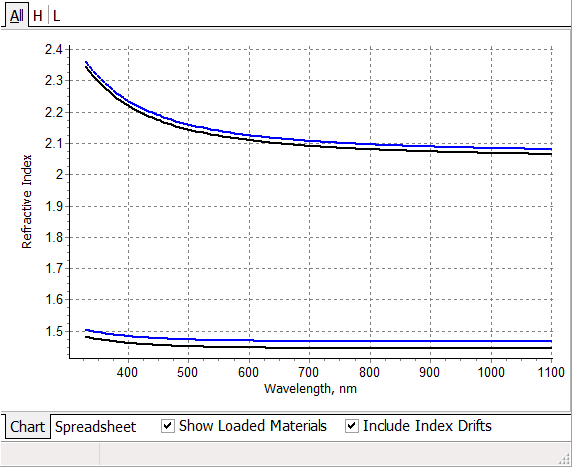Indices Correction option is purposed for the post-production characterization of layer refractive indices. For various reasons layer refractive indices in a multilayer stack may vary from the corresponding indices being determined from single layer measurements and then used for the computations of optical coating designs. The Indices Correction option allows for the determination of practical indices more accurately and thus provides a feedback to the design procedure. The following refractive index and extinction coefficients models are available:
|

Fitting of experimental transmittance data by model data before and after application of indices corrections model (put the mouse on and out of picture) |
 Refractive index offsets calculated in the course of the reverse engineering process. Refractive index offsets calculated in the course of the reverse engineering process. |
The Index drift models allow you to include into consideration possible drifts of the refractive indices of layer materials:
\[ \delta n_j=C\exp(-\alpha j)\] Exponential type of drifts usually provides large deviations at the beginning of deposition that are rapidly decreasing with the layer number. |
Read more in our papers:
|
|
Look our video examples at YouTube
OptiLayer videos are available here:
Overview of Design/Analysis options of OptiLayer and overview of Characterization/Reverse Engineering options.
The videos were presented at the joint Agilent/OptiLayer webinar.